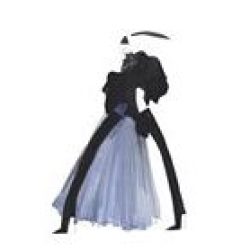Alber Elbaz is, perhaps, the least high-tech designer working in fashion today. “You know, I don’t drive, I don’t have computers, I don’t use the Internet,” the 54-year-old Lanvin designer says. “Technology brings everything to us fast, but I find it makes things more flat — you don’t hear the voice, you don’t know the truth.” Because of this, Elbaz says he finds clothes today more “flat” than ever: “hard edges, bright colors, prints — things that look good in the 2D.” But, he emphasizes, fashion is a 3D art: “It’s not only about the front and back. It’s everything in between.”
With this in mind, he has curated “Alber Elbaz/Lanvin: Manifeste,” a photography exhibition opening at the Maison Européenne de la Photographie (MEP) in Paris this week, which uses his work at Lanvin to explore the relationship between photography and fashion and celebrate the art and craftsmanship of clothes making. More than 350 images by photographers including Mark Leibowitz, James Bort and Alex Koo, as well as Elbaz’s original sketches and a dozen toiles — original linen maquettes of outfits — will be on display; the setup traces the story of Lanvin garments from conception to production to advertising. Elbaz describes the exhibit as “going from thinking, to the process of making, to the media,” adding, “what I love about my work are the people who make it and the process of making it.”
Elbaz has turned down several museum exhibition invitations to display his fashion over the years — though he did help with the house founder Jeanne Lanvin’s sweeping retrospective at the Musée Galliera last year — because, as he sees it, “you only put your clothes in a museum if they are perfect and you are finished. That’s it.” But when the MEP’s director Jean-Luc Monterosso approached him two years ago, he decided to reconsider: after all, the MEP calls itself a “maison” or “house,” rather than a museum, and the show wouldn’t be a traditional designer retrospective but rather something more introspective. Elbaz agreed and let his ideas percolate as he continued to work on his many collections, until he realized last June that the date was rapidly approaching. “They said, ‘You can wait a year,’ but I said, ‘No, it has to be now or never,’” he says. He pulled the show together in four weeks this summer: “When something feels right, you have to do it.” Originally, he wanted to title the show “Propaganda,” because, he explains, “there is so much propaganda in fashion today.” But then he came up with “Manifeste” — “because ‘mani’ means hands, and ‘fest’ in Latin is fact or truth,” he says.
The show opens in an all-white room, dotted with Elbaz’s black marker drawings of garments, a dozen toiles of his various designs and black-and-white photos of fittings and adjustments. He chose to use toiles rather than fully executed garments, he says, because a toile “is unfinished work, and maybe it’s never finished.” The show continues through a suite of rooms filled with more black-and-white images of show productions and backstage moments. Color finally emerges in a small, all-red room, with bold-hued photographs of the finished garments on models, or what Elbaz describes as the “unveiling” to the public — the moment, he says, “when you see the power of the media, the propaganda. The process of media is at times stronger than creation.”
While the exhibition documents a fashion house at work, Elbaz insists that “it is not like a reality show: what it looks like in an atelier or backstage. It’s about finding the balance between the mysterious and unveiling, the big and the small, the no publicity and a lot of publicity. And hopefully the truth.”
